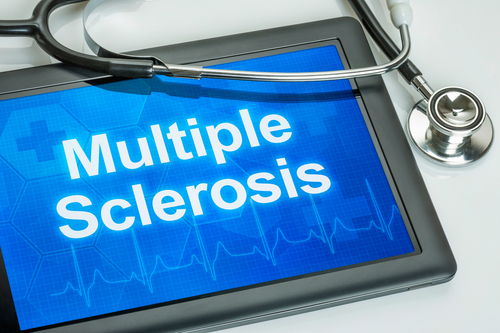Bright Prospects For Golden Spice In The Treatment Of Multiple Sclerosis?
Multiple sclerosis (MS) is an autoimmune disease involving the central nervous system by destructing the myelin sheath, the protective covering around the neural cells. Due to the wide range of responsibilities the involved organ bears, MS might be associated with a variety of symptoms every where in the body. Multiple sclerosis is the most common demyelinating disease in young adults and a major cause of neurological disability.
MS fits into a group of diseases known as neurodegenerative diseases. The term neurodegeneration describes the progressive deterioration of neurons in the central nervous system. Neurodegenerative diseases such as multiple sclerosis, Alzheimer’s disease, Parkinson’s disease, amyotrophic lateral sclerosis (ALS), Huntington’s disease, glaucoma, age-related macular degeneration, and diabetic encephalopathy (DE) involve millions of people around the world and they are expected to increase by 20% in the next decade, with a much higher incidence rate in North America.
Most MS patients experience a biphasic disease with different pathologic mechanisms in the relapsing-remitting and the secondary progressive stages, i.e. while the relapsing-remitting phase is predominantly the result of inflammatory reactions, the secondary progressive phase is mainly resulted by oxidative stress and excitotoxicity leading to neurodegeneration. Unfortunately, the side effects of the existing drugs limit the number of pharmaceutical agents that can be used without serious concerns.
However, a recent promising approach to change the course of disease and delay the clinical symptoms of MS concerns inactivation of oxidative stress and excitotoxicity. With that concept in mind, different dietary interventions have been aimed recently to reduce oxidative stress. Such reductions has been successfully associated with neuroprotection in many cases. Some scientists argue that prior to the initiation of damage, the best approach would be neuroprotection. As I described in my previous posts, one amazing neuroprotective antioxidant substance we’ve got is curcumin which is a turmeric-derived polyphenol compound. A number of studies have shown its potential effectiveness in inflammatory and neurodegenerative diseases.
Interestingly, we remember from history books that spices has shaped a considerable part of history and civilization. Columbus, Vasco de Gama and many others sailed to fetch spices, and of course, they were not the firsts in that quest. India and south Asia had long encouraged ancient engineers and navigators to improve their inventions. Historically, many of those spices were considered medicinal and modern pharmaceutical tools have enabled researchers to identify the molecular pathways of many of these nutraceuticals. One of those sought-after spices was turmeric. It is the powdered rhizome of Curcuma longa, a perennial plant that grows naturally in Southeast Asia. The main medicinal constituents of turmeric are commonly known as curcuminoids.
Since turmeric has historically been used for what we now call inflammatory diseases, many researchers have focused on its antiinflammatory or antioxidative properties. It seems that we are going to see more of these nutraceuticals being developed as new drugs against neurodegenerative maladies.
Preliminary studies have shown that curcumin inhibits demyelination by modulating multiple signaling pathways and suggest its use in the treatment of MS. Yet, many studies regarding anti-oxidative and genetic-modulating properties of curcumin are in in vitro stage and more clinical studies are required to establish its safe and efficient use in MS patients, because there is a “dark side” of curcumin; its poor pharmacokinetic properties. in other words, one can imagine curcumin as a space shuttle that might not reach the space station because it would blow up on the launch pad. That is, curcumin might be very unstable inside our body.
Different methods have been tried therefore for developing formulations with greater bioavailability such as using adjuvants like piperine or complexes of curcumin with phospholipids. Novel delivery systems such as nanoparticles, micelles, or liposomal curcuminoids have also been recently employed to make progression in the production of more bioavailable, effective and safer forms of turmeric in neurodegenerative diseases. Some scientists have even proposed that curcumin’s therapeutic effect may not be adversely affected by its poor absorption and fast metabolism. They suggest that its benefits may be dependent on improvements in intestinal microbiome and decreasing parasitic, and fungal infections, intestinal permeability, oxidative stress, and encouraging an overall intra-intestinal wellness that will lead to the extra-intestinal health.
Despite all these optimistic progressions and my own deepest personal hopes of finding a safe and effective way to manage MS, the cautionary reports should not be swept away by the storm of scientific papers and personal Websites wowing for curcumin as a treatment for everything! I believe health care providers should not forget that the mere presence of scientific interest never equals a scientific proof. In medicine, it takes time and painstaking effort to put ideas into work, in a safe and confident way.
I would like to hear your opinion on this kind of situations. How do you think a health care provider is supposed to reach a decision in cases like this? Should they offer their patients a possible treatment like turmeric/curcumin or should they wait until the scientific world come up with a solid consensus?


